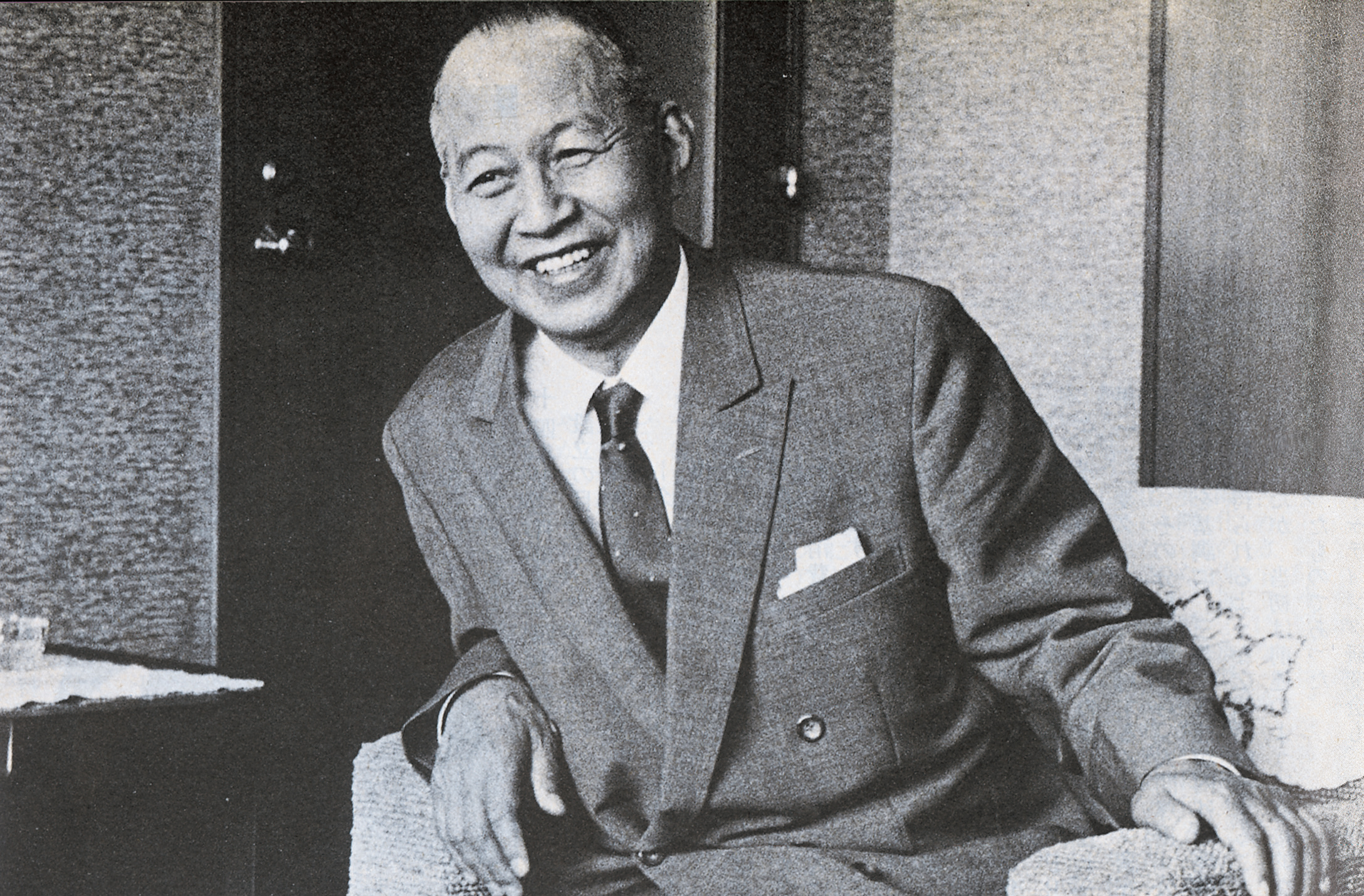Our Roots A history of rising to the challenge vol.4
Japan's Economy Surges as Tokyo
Prepares to Host the Olympics
- New Business Models Begin to Take Shape
We reflect on the situation in Japan and developments at Mitsubishi Shoji during the tenure of President Kiyohiko Sho.

Kiyohiko Sho became president of Mitsubishi Shoji in 1960. Around this time, the Japanese government announced policies for liberalizing international trade and currency exchange, along with its income-doubling plan. Meanwhile, Tokyo was gearing up to host the 1964 Olympics. Various construction projects were getting underway in the capital and all across the country, setting the scene for the remarkable period of high growth that would soon envelope Japan.
Meanwhile, some scholars and journalists were talking about "the end of the era of sogo shoshas". Newspapers and other media highlighted views on Japan's rapidly growing economy from the perspective of manufacturers, who suggested that sogo shoshas were likely to become expendable as manufacturers grew stronger and expanded their own networks. However, shoshas developed new functions in response to the changing business environment and continued to be a driving force in Japan's economic development.
Around this time, solidarity among companies of the Mitsubishi group grew even stronger. After WWII, Mitsubishi Heavy Industries had been divided into three separate entities, but in June 1964, the companies merged to form a new Mitsubishi Heavy Industries. In September 1964, the Mitsubishi Public Affairs Committee (MPAC) was established, with members from 39 companies of the Mitsubishi group. With President Sho serving as its first chairman, MPAC proceeded to strengthen ties across the Mitsubishi group.

Manufacturing activities, centered on heavy and chemical industries, intensified as Japan's high economic growth continued, and plant exports to Southeast Asia and other regions increased; there was an upswing in long-term projects involving the development of resources overseas and a trend toward large contacts also emerged. Mitsubishi Shoji leveraged the technological capabilities of its counterparts in the Mitsubishi group to successively win large contracts for plants and machinery all over the world. Mitsubishi Shoji also served as a catalyst for international business expansion by gathering companies together to tackle new projects and then following through until new plants were up and running overseas; in this way, a new business model began to take shape for Mitsubishi Shoji. It was also around this time that negotiations began on the development of the Brunei LNG Project, which would become Japan's first large LNG project.
As the company expanded its domestic and international networks, Mitsubishi Shoji continued to become more widely involved in developing business all over the globe.